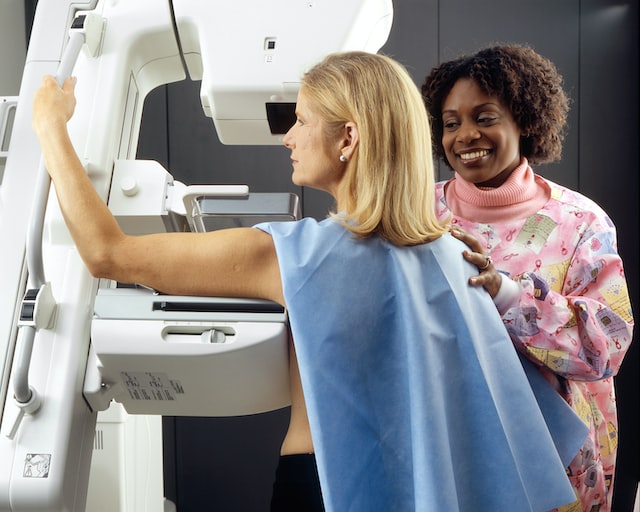Women experience a variety of health issues related to their gender. Some of these conditions are unique to women, while others may present differently in women than in men. As a result, some women’s health conditions may go undiagnosed for extended periods of time. Women face unique challenges and must seek out information and resources regarding these conditions on a regular basis. If you are concerned that you or someone you know suffers from one of the following women’s health issues, this article will provide you with an introduction to several common concerns among women. Read on and learn more about the most common women’s health issues today.
Overview Of Women’s Health Issues
Women’s health issues are a broad range of conditions that are unique to women. These health issues are caused by a combination of factors that may include genetics, hormones, a woman’s age, lifestyle choices, and the environment in which she lives. While some women’s health issues are unique to women of a certain age or with a certain genetic predisposition, other conditions are more common across the board.
Breast Cancer
Breast cancer is one of the most common forms of cancer among women. It is a disease that originates in the cells of the breast tissue. Early detection and treatment are critical factors in the successful treatment of breast cancer. Early detection can enable physicians to remove the cancerous cells before they have a chance to spread. Women should be aware of the signs and symptoms of breast cancer and report any symptoms to their doctor immediately.
- Breast swelling
- Breast or nipple pain
- Nipple retraction
- Nipple discharge
- Lumps
- Sudden dry, red or flaking skin
Endometriosis
Endometriosis occurs when uterine tissue growth occurs in other regions of the body. This can cause an extreme amount of pain during menstruation and can sometimes lead to infertility. Endometriosis is often difficult to diagnose and can be difficult to treat as well. Some of the common symptoms of endometriosis include abdominal pain, pain during intercourse, and heavy or irregular periods. To understand more about this condition, explore this in-depth guide.
Heart Disease
Heart disease can cause shortness of breath, dizziness, chest pain, and various other symptoms. Heart disease can lead to a heart attack; however, this can sometimes present differently in women than it does in men, which can lead to misdiagnoses. Women don’t always get a numb arm or chest pain when experiencing a heart attack; instead, they often experience back pain, sweating, or shortness of breath. If you notice any of these symptoms, including chest pain, you should visit your doctor right away.

Ovarian And Cervical Cancer
Ovarian cancer and cervical cancer are two diseases that are very common among women. Both of these cancers can be detected early and treated before they have a chance to become life-threatening. These cancers can affect women of any age but are more common over the age of 25, which is why going to cervical screenings is vital to catch symptoms of abnormal cells in the cervix early. Additionally, any unusual pain in your lower abdomen should be reported to your doctor.
Dysmenorrhea
Dysmenorrhea is the medical term used to describe painful periods. While this is a common health concern among women of all ages, it is most common among adolescent girls. There are several different treatments for dysmenorrhea, including birth control pills, ibuprofen, and other pain relievers. Many women experience dysmenorrhea their entire lives. Although the condition is common and usually resolves as women age, certain factors can exacerbate symptoms. Factors like poor diet and low levels of exercise can exacerbate symptoms of dysmenorrhea.
Uterine Fibroids
Uterine fibroids are non-cancerous growths made up of the uterine muscle that grows in the uterus of many women. These fibroids can be very painful, especially during menstruation. Uterine fibroids can be removed through a surgical procedure but are not typically considered dangerous. The most common symptom of uterine fibroids is abnormal vaginal bleeding, including between periods, after sexual intercourse, or during a pelvic exam. Other symptoms include pelvic pain, pressure, or discomfort. Find blood work near you, get your blood analyzed, and discuss your results with your doctor.
Ovarian Cysts
Ovarian cysts occur when a woman’s ovaries produce excess amounts of fluid. These cysts can cause pain but are often benign. If a woman’s cysts are large enough, she may experience pain during menstruation. Cysts can be removed through a surgical procedure. Cysts may go unnoticed if they are small and do not cause symptoms. However, they can also lead to abdominal pain, discomfort in the lower back, cramping, and irregular periods. If a cyst grows very large, it may rupture and cause severe pain, fever, and vomiting.

Urinary Tract Infections
Urinary tract infections (UTIs) are bacterial infections that may affect any part of the urinary system. Women are at a much greater risk for UTIs than men due to the anatomy of the female urinary tract. UTIs often present no symptoms, so women often go undiagnosed with UTIs. When left untreated, UTIs can become extremely painful. UTIs are commonly treated with antibiotics; however, recurring UTI issues may require further medical exploration to determine the cause.
Bacterial Vaginosis
Bacterial vaginosis is an infection of the vagina that is caused by an imbalance in the normal bacteria that live there. This condition often goes undiagnosed as it is often asymptomatic and can be confused with other health issues. Bacterial vaginosis is often diagnosed after a pelvic exam and may be treated with antibiotics. Bacterial vaginosis can cause itching, burning, and an unusual smell.
Gestational Diabetes
Gestational diabetes occurs when the body does not produce enough insulin to regulate blood sugar levels. Gestational diabetes can affect women of any age and can often go undetected until the third trimester of pregnancy. BMI, age, ethnicity, and family history can all contribute to a woman’s risk of developing gestational diabetes. Symptoms of gestational diabetes may include extreme thirst, frequent urination, fatigue, and blurred vision. Gestational diabetes is caused by hormonal changes during pregnancy and is often treated with diet and lifestyle changes. Women who have this condition during pregnancy may need extra monitoring and care from their doctor.
Menopause
Menopause marks the end of monthly periods and is a normal part of ageing for many women. This transition occurs because the body produces less oestrogen over time, meaning a woman’s ovaries are producing less oestrogen and progesterone. Most women experience menopause between the ages of 45 and 55, and it can take up to 10 years for all changes in the body to fully take place. Most of the symptoms of menopause are caused by changes in oestrogen levels. These symptoms include hot flashes, night sweats, and mood changes.

Final Thoughts
Women experience a number of unique health issues that are often not common among men. Many of these issues require special attention and vigilance to ensure proper diagnosis and treatment. This article provided an introduction to four common women’s health issues: endometriosis, ovarian and cervical cancer, dysmenorrhea, and ovarian cysts. Women should be prepared to ask questions, seek out information, and understand their options when it comes to managing their health. Stay informed about the health issues that affect you and those you care about.


































